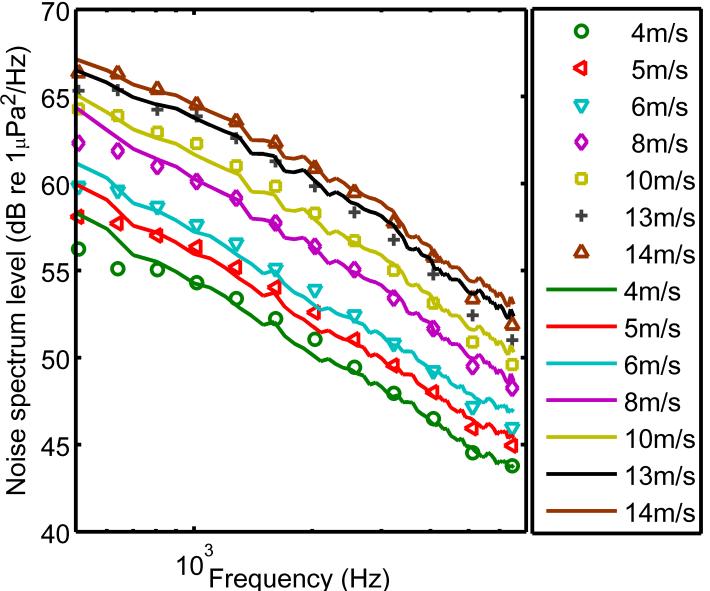The action of wind on the sea surface plays an important role in the noise generation mechanism. It is important to quantify the wind dependence of wind-dominated ambient noise and build a model to forecast the ambient noise in different environment.
Recently, JIANG Dongge, a doctoral student from the Institute of Acoustics of the Chinese Academy of Sciences, along with his mentors Prof. LI Zhenglin and three other researchers, investigated the wind dependence of ambient sea noise based on experimental data and established a ray model whose forecasted results are in good agree with the experimental data for different wind speeds.
Their findings were published in SCIENCE CHINA Physics, Mechanics & Astronomy.
The experiment was conducted with submersible buoy system for 43 days, recording meteorological and hydrological data synchronously. Data processing results showed approximate quadratic noise-wind speed dependence in the frequency range of 0.5-3.2 kHz when the local wind speed exceeds 3 m/s. Then, the ambient noise spectrum levels in the wind speed grouping from 4 m/s to 14 m/s were obtained.
Researchers established a numerical modeling of ambient noise field based on ray theory. The wind source level formula was revised by minimizing the sum of deviation between experimental noise spectra and numerical results at the wind-dominated frequency band and wind speed grouping.
The noise spectrum levels at the different wind speeds forecasted by the revised model were in good agreement with the experimental noise spectra, as shown in Figure 1.

Figure 1. Comparison of the experimental noise spectrum levels (dotted line) and noise spectrum levels forecasted by the model (solid line). (Image by JIANG Dongge)
The model might be used to forecast the ambient noise level in the South China Sea for marine meteorological forecast.
The research was supported by the National Natural Science Foundation of China.
Reference:
JIANG Dongge, LI Zhenglin, QIN Jixing, PENG Zhaohui, HAO Shao. Characterization and Modeling of Wind-Dominated Ambient Noise in South China Sea. Sci.China-Phys. Mech. Astron.60, 124321 (2017). DOI:10.1007/s11433-017-9088-5.
Contact:
WANG Rongquan
Institute of Acoustics, Chinese Academy of Sciences, 100190 Beijing, China
E-mail: wangrongquan@mail.ioa.ac.cn


